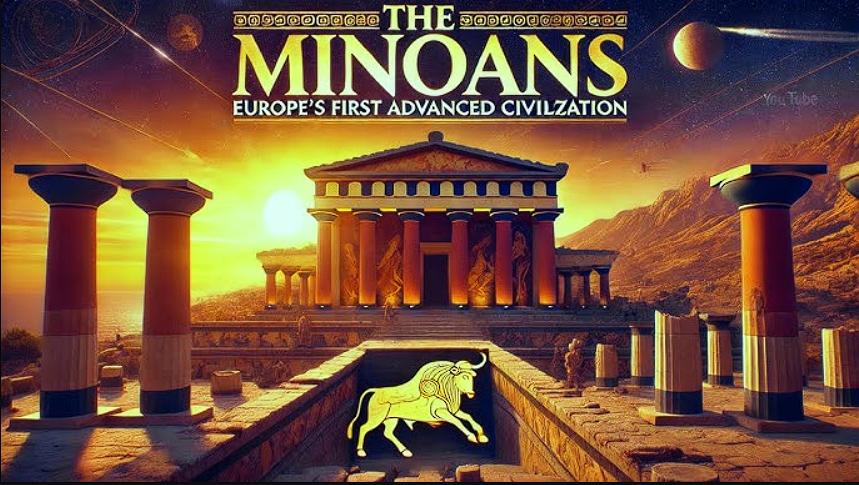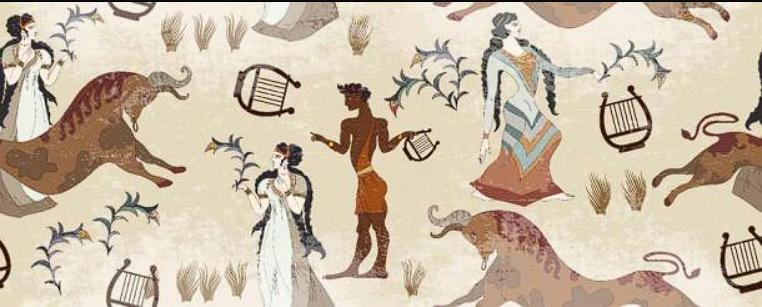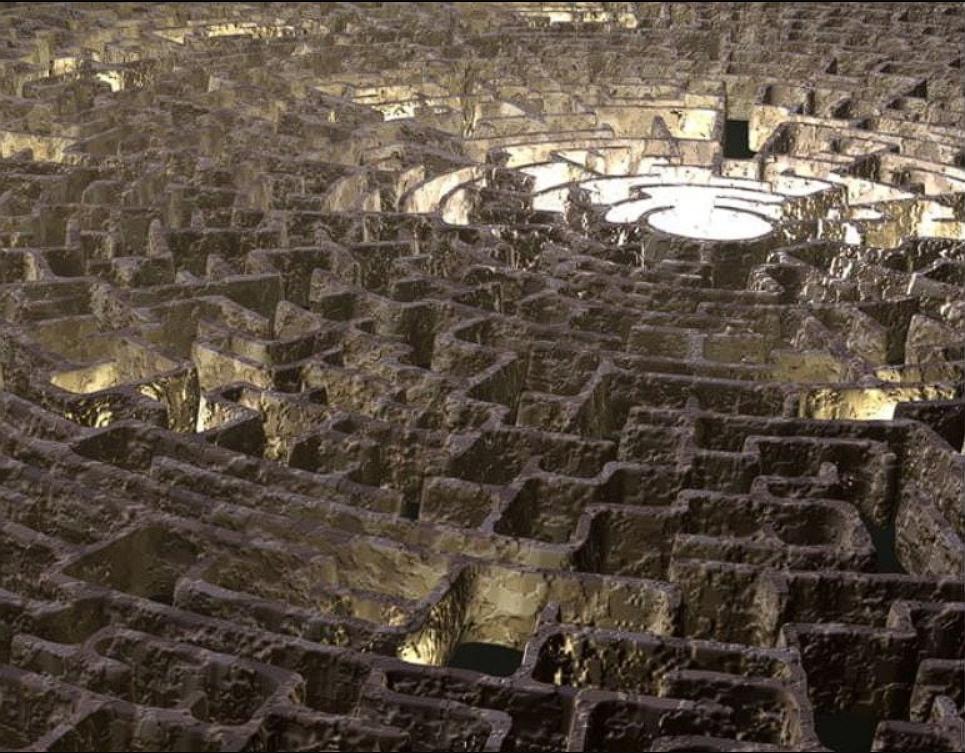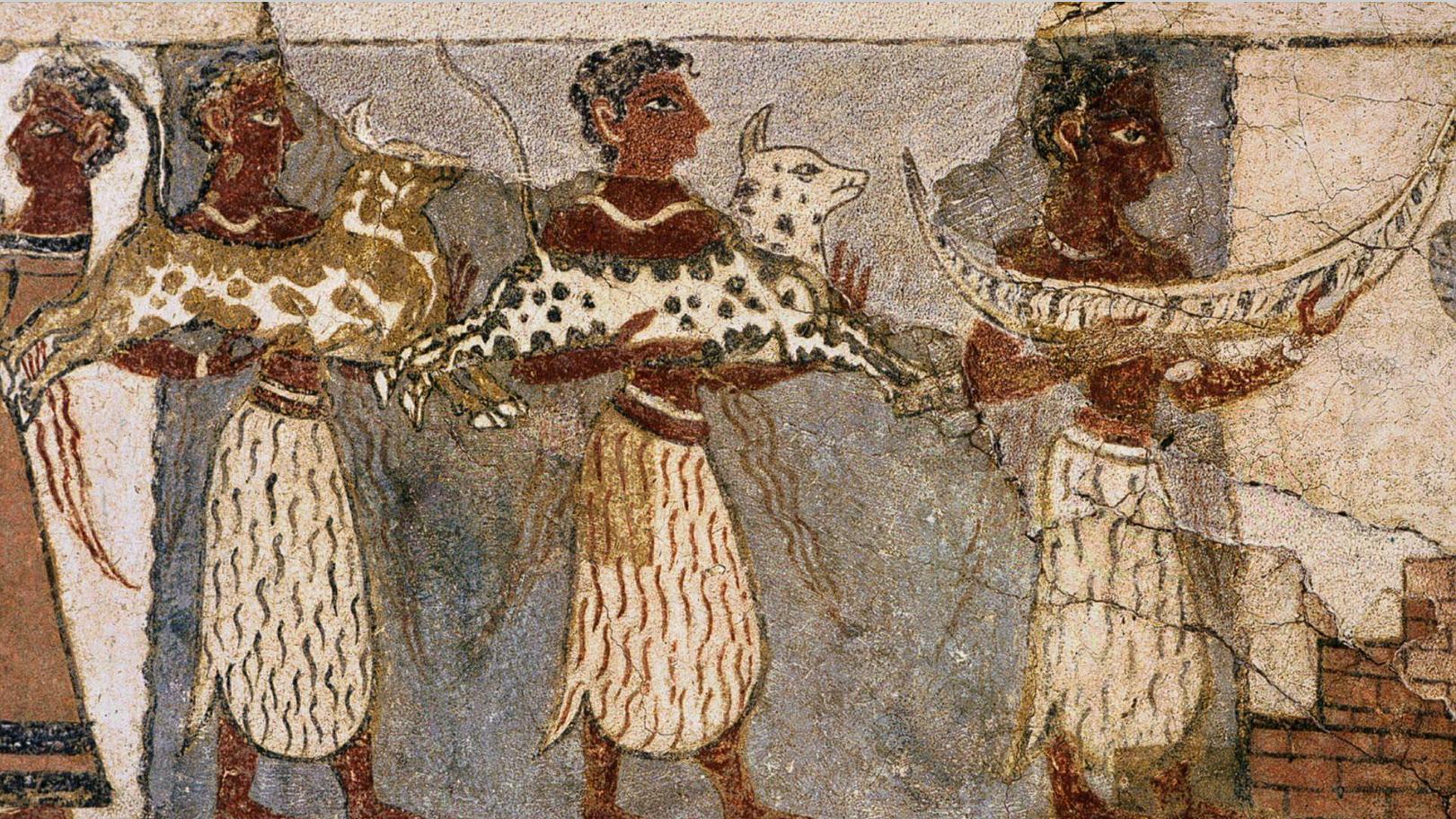The Rise of the Minoan Civilization
The Origins of the Minoans
Thousands of years ago, before the dominance of Athens and Rome, a remarkable civilization emerged on the island of Crete. Known as the Minoans, named after the legendary King Minos, they built one of the most sophisticated societies in Europe. Their civilization flourished from approximately 3000 BCE to 1100 BCE, leaving behind grand palaces, intricate artwork, and a complex social structure that continues to intrigue historians today.
The Great Palaces of Crete
The Minoans constructed massive palace complexes, with Knossos being the most famous. These palaces were not just royal residences but also centers of economic and religious activities. Featuring advanced drainage systems, vibrant frescoes, and vast storerooms filled with trade goods, these architectural marvels showcased the Minoans’ ingenuity and wealth. Other notable palaces included Phaistos, Malia, and Zakros, each contributing to the civilization’s impressive legacy.
Trade and Cultural Exchange
The Minoans established a vast trade network, linking Crete to Egypt, the Near East, and the Aegean islands. Their ships transported goods such as olive oil, wine, textiles, and exquisite pottery. In return, they imported luxury items like gold, ivory, and precious stones. This trade network not only enriched the Minoans but also facilitated cultural exchanges that influenced art, religion, and technology across the ancient Mediterranean.

Minoan Art, Language, and Mythology
The Beauty of Minoan Art
Minoan frescoes, pottery, and sculptures depict scenes of nature, marine life, and religious rituals, reflecting their deep connection with the world around them. The famous “Prince of the Lilies” fresco and the “Dolphin Fresco” found in Knossos are prime examples of their artistic excellence. Unlike other ancient civilizations that focused on war, Minoan art often celebrated peace, prosperity, and harmony with nature.
The Mystery of Linear A
One of the greatest puzzles of the Minoans is their writing system, known as Linear A. Unlike Linear B, which was later used by the Mycenaeans and successfully deciphered, Linear A remains an enigma. Scholars believe it represents a unique language unrelated to Greek, hinting at a lost linguistic heritage. Deciphering this script could unlock secrets about Minoan governance, religious practices, and daily life.
The Myth of the Minotaur
Minoan culture is closely linked to the famous Greek myth of the Minotaur. According to legend, King Minos kept a half-man, half-bull creature in an elaborate labyrinth beneath his palace in Knossos. Some historians speculate that this myth was inspired by the intricate palace structures and the Minoan’s reverence for bulls, as seen in their bull-leaping frescoes and religious ceremonies.

The Fall of the Minoans
The Devastation of the Thera Eruption
In the 16th century BCE, a catastrophic volcanic eruption on the island of Thera (modern-day Santorini) sent shockwaves across the Aegean. This massive explosion triggered tsunamis that ravaged Minoan coastal cities, causing widespread destruction. While the civilization managed to recover, the disaster weakened their dominance and disrupted their trade networks.
The Rise of the Mycenaeans
By 1400 BCE, the Mycenaeans, an emerging Greek civilization, began to exert influence over Crete. They adopted many aspects of Minoan culture, including their writing system (Linear B), architectural styles, and religious practices. However, by 1100 BCE, the Minoan civilization had faded into obscurity, with Mycenaean dominance marking the end of an era.
The Legacy of the Minoans
Despite their decline, the Minoans left an indelible mark on European history. Their advancements in art, architecture, and trade paved the way for future civilizations. Elements of Minoan culture can be seen in classical Greek traditions, from mythology to urban planning, ensuring their influence endured long after their civilization disappeared.

Unraveling the Secrets of the Minoans
Archaeological Discoveries
Since the rediscovery of Knossos by British archaeologist Sir Arthur Evans in the early 20th century, excavations have unearthed breathtaking artifacts and structures that continue to reshape our understanding of the Minoans. New findings in Akrotiri, Phaistos, and other sites provide fresh insights into their daily lives, trade routes, and religious beliefs.
The Ongoing Mystery of Linear A
Deciphering Linear A remains one of archaeology’s greatest challenges. If scholars succeed, it could reveal crucial details about Minoan governance, economy, and social structure. Until then, much of their story remains locked away in undeciphered symbols and ancient ruins.
The Enduring Fascination with the Minoans
The Minoans stand as one of history’s most captivating civilizations. Their artistic achievements, sophisticated cities, and enduring myths continue to inspire historians, archaeologists, and storytellers alike. As new discoveries emerge, we move closer to unraveling the mysteries of Europe’s first great civilization.

Conclusion
How much more remains hidden beneath the ruins of Crete? Could solving the mystery of the Minoans change our understanding of Europe’s ancient past? As researchers continue their quest, the legacy of this enigmatic civilization grows stronger, reminding us of the incredible depth of human history.


CÁC TIN KHÁC
Mary Walton: The Forgotten Inventor Who Helped Clean Up America’s Cities
Tomb of Queen Nefertari in the Valley of the Queens, Egypt
Discover the Hypostyle Hall of the Temple of Hathor at Dendera
Venus de Losange: Unveiling the Mystery of a 20,000-Year-Old Paleolithic Icon